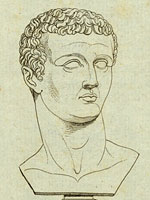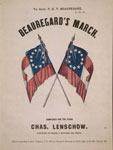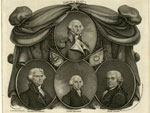Action in the Past: What Can Elementary Students Do?

In "Just Another Emperor," Peter Lee, Alaric Dickinson, and Rosalyn Ashby studied how students explain the actions of historical figures. Understanding how people from the past thought and believed, and relating that to the actions historical figures took, is central to the discipline of history. These authors wanted to know if elementary and middle school students were up to the task.
For a project funded by Great Britain's Economic and Social Research Council, Lee, Dickinson, and Ashby worked with 320 children aged 7–14. The kids were shown an illustrated story of the Roman invasion of Britain and asked to explain what led Emperor Claudius to invade Britain. They were given a host of reasons why the invasion was more trouble than it was worth, from the cost of the invasion to the resistance the Romans encountered, and then told Claudius had gone ahead and invaded anyway. How would these young students explain his actions?
This is what they found: Rather than answering that Claudius invaded Britain because he wanted to, most of the children, regardless of age, chose to offer explanations for his behavior.
The students' answers were grouped into three main categories.
- Basic answers that explained Claudius’s actions in personal terms, i.e., Claudius was a man who wanted power.
- Context-aware responses that focused on the fact that Claudius was an emperor who invaded Britain due to his leadership position.
- Complex explanations that rested on a specific understanding of the situation in which Claudius operated. Such explanations recognized contextual problems or opportunities that Claudius faced, noting not only his title of emperor, but the fact that he was a particular emperor in a specific situation. These students saw the past as a different kind of world and sought to understand it.
Older middle-school students relied less on personal explanations and more on situational analysis. In other words, Claudius’s actions were shaped more by historical context than individual desire. This was less true for younger students, who were more likely to rely on personal explanations. This told the researchers that understanding how historical context influences people's actions is learned over time, as students developed and practiced the skills of historical thinking.
Despite the fact that students aged 7 and 8 relied more on personal explanations, at a certain level they were still able to understand historical actions. Young children possess everyday knowledge of how people behave; even elementary-age children can come up with simple but plausible reasons for someone's behavior. These explanations can provide a jumping-off point for thinking about motives in a historical context.

- Identify a decision made by a historical figure—Claudius’s invasion of Britain, for instance—that you want your students to examine.
- Seek out a range of sources that describe the context in which decision-makers were operating at the time.
- Ask students to explain why historical figures made the decisions they did. You can give your students the readings first, and tell them to look for any factors that might have influenced these decisions. Or ask for explanations before you assign the selected readings. Next, have students read the sources and explain how the readings helped them come up with a better answer.
- When students rely on personal explanations ("Because that’s what emperors do," etc.) help them see that specific historical factors can shape how people behave. Send them back to the texts; model for students how they can do this kind of historical detective work themselves.
The students in this study gave three kinds of explanations, depending on grade level, for why Roman Emperor Claudius invaded Britain. Some students' explanations focused on personal reasons:
Claudius wanted to invade Britain and if he did he could take over other [countries]…and then the world.
For others, the emperor's actions were influenced by his position. Asked why he invaded Britain, they explained this behavior would be expected from an emperor:
I think Claudius decided to invade Britain so he could prove he was a great Emperor; an Emperor that could be better than other Emperors.
Finally, there were some students who saw the specific situations in Britain and Rome as both a crisis and an opportunity:
I think that Claudius decided to invade Britain in AD43 because at that time there was peace in the rest of the empire. The Kings of Britain who were friendly towards the Romans were becoming few and far between. Maybe Claudius wanted to gain total control before wavering control was lost altogether.
As these excerpts show, explanations for historical action can vary widely among students, with the more advanced employing historical context along with other factors to give reasons for actions in the past.
See Teachinghistory.org's Teaching Guide Historical Agency in History Book Sets for more on historical thinking at the elementary-school level.
Peter Lee, Alaric Dickinson, and Rosalyn Ashby, "'Just Another Emperor': Understanding Action in the Past," International Journal of Educational Research 27 (3), 1995, 233–244.





![Political Cartoon, Untitled [Progressive Fallacies], March 18, 1912, NARA Political Cartoon, Untitled [Progressive Fallacies], March 18, 1912, NARA](/sites/default/files/progressive.jpg)

